REVEALED: How Israel used swarm of drones to confuse Iranian air defences before ‘firing supersonic Rampage missile’ from fighter jet to take out radar station in precision attack that silenced Tehran’s mullahs
Last week’s Israeli retaliatory strike on Iran appears to have dulled Tehran’s sabre-rattling rhetoric, at least for now.
The surgical strike, which followed the Iranian launch of some 320 missiles and drones at targets in Israel on April 13, is said to have damaged the radar systems of an air defense battery at an airbase near the central city of Isfahan.
Initial reports of the strike were murky, with neither side willing to share details about what happened.
Iranian army commander Gen. Abdolrahim Mousavi said air defense systems shot down “suspicious objects that did not cause any damage,” as Foreign Minister Hossein Amir-Abdollahian described them as “more like toys our children play with.”
But Israeli media claimed this morning that the Israeli Air Force (IAF) has struck Iranian targets with ‘Rampage’ air-to-surface missiles launched from fighter jets hundreds of kilometers west of Iranian airspace.
These supersonic precision missiles are equipped with anti-jamming technology to thwart electronic countermeasures and are designed to penetrate heavily protected targets such as military facilities and bunkers.
Meanwhile, quadcopter drones were used to confuse and distract Tehran’s air defense systems, increasing the effectiveness of the punishing missile strikes.
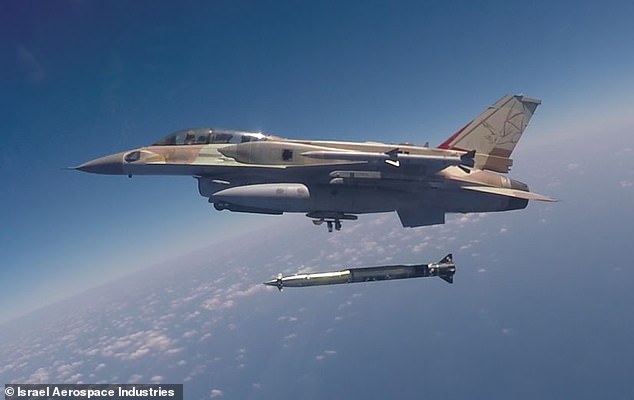
Israeli media claimed this morning that the Israeli Air Force (IAF) struck Iranian targets with ‘Rampage’ air-to-surface missiles launched from fighter jets hundreds of kilometers west of Iranian airspace
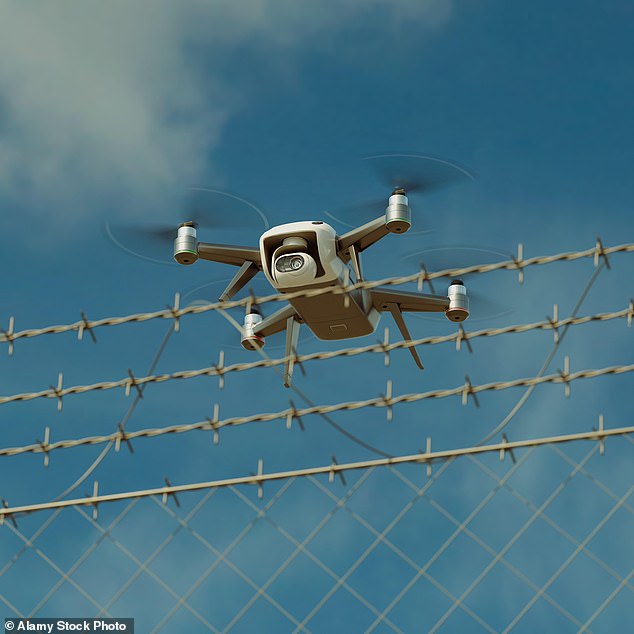
Quadcopter drones were used to confuse and distract Tehran’s air defense systems, increasing the effectiveness of the punishing missile strikes (stock image)
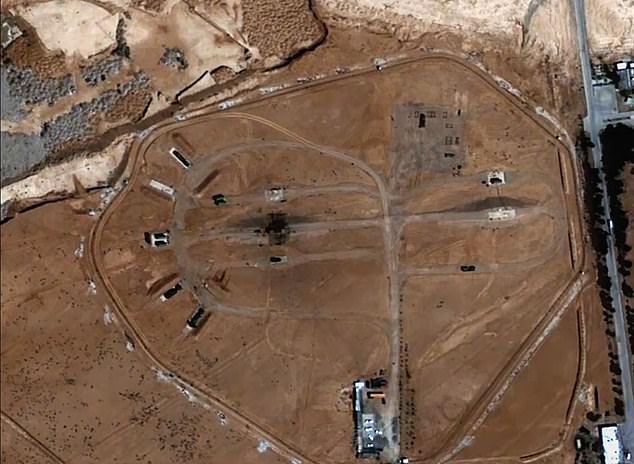
Satellite images obtained by Iran International appeared to show scorch marks at the location of S-300 air defense batteries and radar systems at an airfield near Isfahan
Satellite images revealed by Umbra Space, Skywatch and Planet Labs appeared to show debris strewn around the site of the airport’s radar system.
S-300 air defense batteries that use the radar system to detect incoming threats and were present at the time of the attack were later removed, indicating they were also damaged.
The targeted and measured nature of the attack was reportedly decided after Israeli officials abandoned plans for a more widespread attack similar to that carried out by Tehran on April 13.
After consulting with its allies, the IAF opted for a limited attack that avoided significant damage but still demonstrated the Islamic Republic’s Tel Aviv leadership’s ability and willingness to deliver blows, Israeli officials quoted by the IAF said . New York Times – an assessment that is correct with the conclusions of many analysts.
Andrew Borene, executive director of threat intelligence agency Flashpoint, told MailOnline: ‘Israel’s kinetic attacks on Iranian territory could have been intended to demonstrate Israel’s determination to deal with Iran in a tit-for-tat battle , possibly as a limited attack. a demonstration that Israeli precision strike technology can reach the core of Iran’s most sensitive military programs.”
Other analysts said the minimal impact of the IAF’s attack on Isfahan will allow Iran to climb out of further escalation.
“If this is the extent of Israel’s retaliation, it could be described as a de-escalatory attack. The use of small drones such as quadcopters provides a degree of plausible deniability that helps Iran downplay the effect of the attack,” Dr Andreas Krieg, senior lecturer at King’s College London’s School of Security Studies, told MailOnline.
He added: “The Iranians should respond to an attack that is undeniable or involves Israeli fighter jets over Iran – but this attack does not cross the threshold. Neither side wants an all-out war.”
The attack appears to have done just that: Iranian officials made no mention of possible Israeli involvement, while Supreme Leader Ali Khamenei pointed out how little damage Israeli targets sustained in the April 13 attack.
‘How many missiles were launched and how many of them reached their targets is not the main question.
“What really matters is that Iran showed its willpower during that operation,” he said.
But Dr. Kreig added that Netanyahu, whose popularity in Israel has plummeted with dozens of hostages still in captivity in Gaza after six months of war with Hamas, could try to stoke tension with Iran to ensure his own safety at the head of the to maintain government.
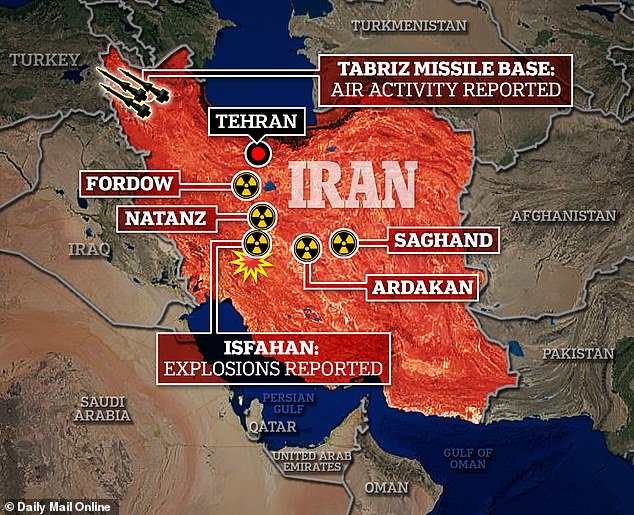
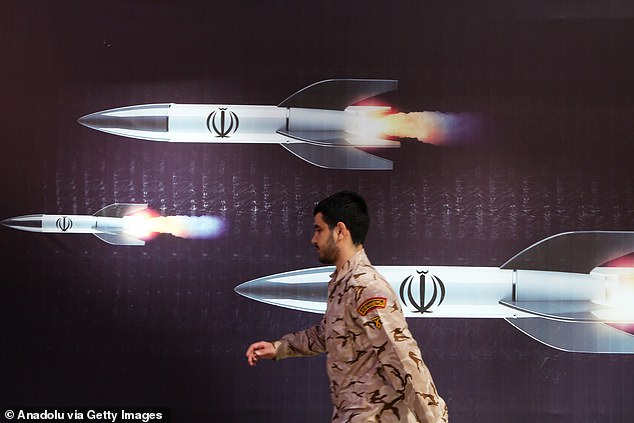
People walk through the streets of Tehran as they continue their daily lives after the explosions heard in the Iranian cities of Isfahan and Tabriz on April 19, 2024, in Tehran, Iran

Netanyahu faces significant pressure at home from his citizens and within his own government. (Image: Thousands carry Israeli flags and chant anti-government slogans as they protest Benjamin Netanyahu’s resignation)
“I think a protracted but manageable conflict is in Netanyahu’s interest. This can be achieved by expanding the conflict with the Iranian Resistance Axis. This is a low-risk conflict that keeps Israel on high alert without the risk of becoming existential,” he said.
“Israel could decide over time to launch a series of scattered attacks that are individually so negligible that Iran does not have to respond… a ‘death by a thousand cuts’ strategy that would be difficult to discourage.”
As such, it is too early to tell whether tensions are actually cooling, or whether Tehran and Tel Aviv are simply entering a brief period of reprieve from which further conflict could emerge.
Meanwhile, Noam Ostfeld, a defense analyst at global risk analysis firm Sibylline, said the exchange of strikes has changed the rules of cooperation between Iran and Israel, making future attacks and dangerous escalation a much stronger prospect.
‘In the longer term, while we still believe that further direct attacks on Iran are not likely, there is a realistic possibility that this latest exchange has created a new basis for acceptable levels of engagement.
“Iran could seek further indirect ways to retaliate against Israel (such as ship hijackings) and Israel could carry out limited attacks that can plausibly be denied or do not require escalation.”
Justin Crump, British Army veteran and CEO of Sibylline, added“It remains to be seen whether this is the beginning of a more coordinated campaign by Israel to steadily damage Iran while remaining below an escalation threshold, or an isolated act.
“Iran has its own internal problems with rising inflation and anti-regime sentiment and has so far been keen to prevent things from escalating.
‘However, this cannot now really be a return to normal and I would say that honor is far from satisfied on both sides at this stage.’
While he said the Israeli strikes “may create the illusion that we have nipped the crisis in the bud,” Crump stressed that “the basic level of alert across the region will now be escalated for an extended period of time.”
